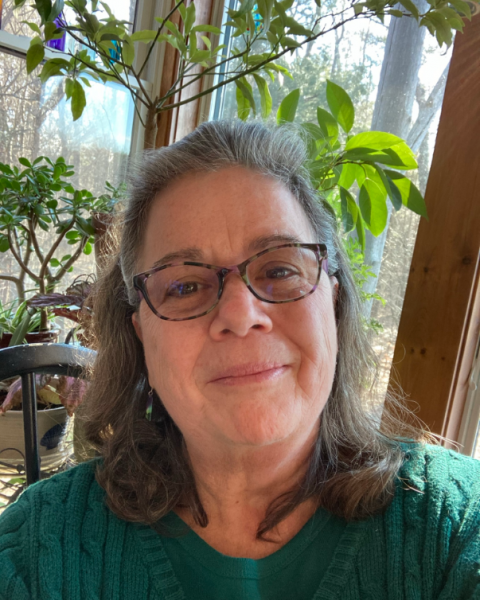Community gardens are cooperatively managed garden plots used for growing food. They are typically organized by a variety of non- profit organizations, municipalities and neighborhoods and can be found throughout New Hampshire. UNH Extension provides education and information to people who manage and participate in community gardening.
Safety First
Please understand that although community gardens may be open, any community gardener who chooses to skip the 2020 growing season because of the virus should not be at risk of losing their garden plot for the 2021 growing season because of a decision not to use the plot in 2020. We all need to continue to practice social distancing and stay at home as much as possible to reduce each other’s risk. However, for gardeners who are healthy and choose to start gardening soon, it’s their responsibility to physically and socially distance themselves from one another in accordance with Governor Sununu’s 3/26/20 Emergency Order #17, and to adhere to the CDC’s guidance on How to Protect Yourself from COVID-19: https://www.cdc.gov/coronavirus/2019-ncov/prepare/prevention.html
How Each Community Gardener Can Reduce Their Own Risk and the Risk to Others
- Gardeners should bring to the garden: a. Face mask b. Hand sanitizer, disinfecting wipes, or hand soap c. A personal trash container that you take with you at the end of the day d. Your own tools, if possible
- Please wear a mask. This helps you to not touch your mouth or nose, as well as giving extra protection from droplets.
- Immediately wash your hands or use hand sanitizer after opening the gate or locks, accessing the shed or tools, using spigots or hoses, and/or touching any community property at the garden.
- If possible, bring your own tools from home, do not share them. Take them home when you are done for the day.
- If you are using the community tools provided, before you begin gardening, use disinfecting wipes or soap and water to wipe the tools down and wash your hands afterward. Please carry out any wipes, gloves or trash with you. Don’t leave anything behind, as each of us needs to be extra careful.
- The garden organizers are creating systems that reduce the number of community gardeners on site at one time. However, if you arrive and there are 10 or more people already working, please leave and return later (although it may be inconvenient) or stay in your car and wait until there are less than 10 people on site.
- Do not congregate at the picnic tables or benches while the risk of COVID-19 is high. Work in your garden bed and if you need a break, please do so away from others.
- No large gatherings of more than 10 people will be allowed during the COVID-19 health crisis and the garden will not be open to outside visitors during this time.
- During this health crisis, children of gardeners will have to be more closely supervised so that they stay away from others. Please talk with your children before coming to the garden and set strict limits while at the garden for their safety and the safety of others.
- Stay ahead of seasonal tasks to limit your time and energy:
a. Mulch now to prevent weeds and reduce soil moisture loss.
b. Use row covers for insect control when feasible.
How Community Garden Organizers Can Help Reduce Risk for Everyone
Organizers need to develop a system that limits the amount of people at the garden in accordance with the Governor’s orders. Below are some suggestions:
- Using a map, number the garden beds even or odd numbers (making sure that there are not even or odd numbers near each other, i.e., behind or in front of other beds). Next, provide the gardeners with the number and allow them to work their beds in accordance with even/odd days. This allows half the gardeners there each day and keeps distance between them.
- After the odd/even system is in place, if there are still too many gardeners potentially on site at the same time, use their numbers and further limit the number of hours that they may be on site. For example, odd numbers between 1 and 15 may garden from 8 a.m. to 11 a.m., odd numbers 17 to 31 may garden from 11 a.m. to 2 p.m., etc. (A sign-up where gardeners choose a preference of times in the morning, afternoon or evening may better help them accept the limited hours.)
- Separate from the examples above, use a sign-up system where gardeners must sign up ahead of when they will be there (this is a less fair system, so not recommended).
- Close the gardens to those people who are not gardeners to help limit numbers.
- Email or provide a copy of this document (or one that has been modified for your specific community garden) to each community gardener, making sure to translate into all needed languages.
- While on site, Garden Organizers should always wear a mask, just as requested of the gardeners.
- Provide hand-washing stations just inside the garden entrance if possible and near where tools are stored. Hand sanitizer should also be available. Create signs reminding people to wash their hands often.
- Make sure to keep up on the availability of hand sanitizer and/or hand soap for hand washing stations.
- Disinfect surfaces on a regular basis, including reusable bins and buckets, shared tools, railings, doorknobs, tables, locks, gate latches, water spigots, hoses, etc.
- Separate any picnic tables or benches so that if people do stop to rest, they are separate from each other. Remove any seed swap stations where gardeners typically swap seeds.
- Provide online webinars and information on gardening topics through UNH-CE and other gardening organizations.
Coordinators, check out the UNH-CE NH Community Gardens Map and add your own community garden to the map!
